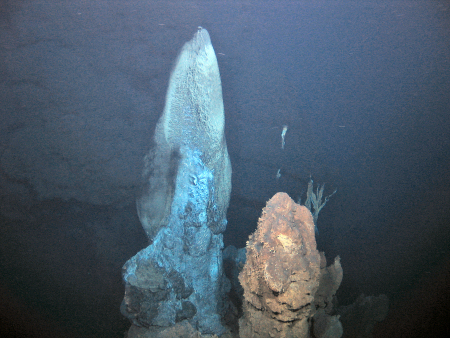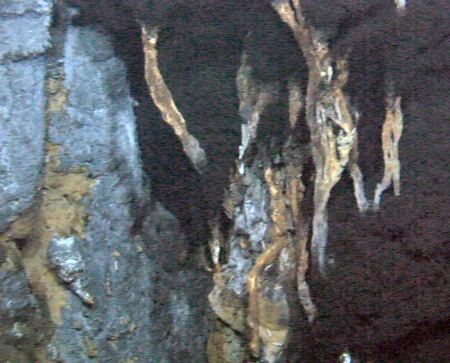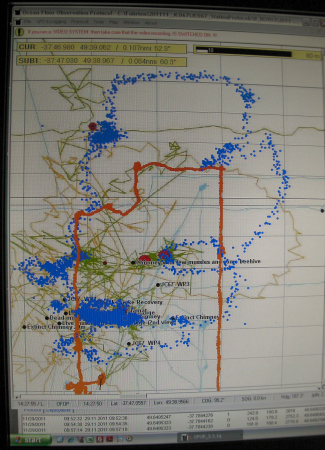Tuesday 29th November
During the night, our survey with the SHRIMP camera sled found some extinct chimneys but also signs of active smokers in an area a few hundred metres north of the known vent field. At the end of the SHRIMP dive, we also ran a survey line across the northern end of the known vent area, and found another black smoker chimney at the top of a slope rising above the area we visited with the ROV.
Today is our last ROV dive at the vents: we are now in the last 24 hours in our scheduled 72 hours of operations here. But gradually, both the geography and biology of this vent field are becoming clearer. Thanks to the electronic event logging system developed by our IT technician Leighton, we have an instant map of where we have been on the seafloor, and what we have found there. This has been immensely useful for navigating the ROV into unexplored areas, and seeing possible patterns in the distribution of vent chimneys.
The objectives for today's last dive are to visit the large smoker chimney found by SHRIMP overnight, and collect the final specimens and data that we need to understand the marine life here. PhD student Leigh has been tasked with planning and leading our final dive here to achieve those goals.
The ROV arrived at the seafloor at 10:25 a.m., and under Leigh's direction, we proceeded to the ring of black smokers from yesterday's dive. From there, we ran north to the chimney found by SHRIMP. This chimney, at the top of a slope of fractured blocks of basalt, is huge: a pillar of sulfide more than 20 metres tall, with three very different chimney structures at its top. One is a single "beehive diffuser" - a geological structure of wafer-like layers formed by hot vent fluids. Another of the crowning chimneys is extinct, but the third is a tangle of interweaving mineral pipes, venting black smoke.

Vents at the top of the huge sulfide pillar

Tangled web of chimney pipes
After videoing this chimney, Leigh took the ROV in a sweep to the east and then south to define the limit of the vent field, and determine the extent of our suspected "lines" of chimneys. Then we returned to the heart of the field, to record a high-definition video survey of another chimney - this time one where venting has declined, to compare with those from previous dives. Finally, we set down to complete our collection of specimens, and record some high-definition video of animal behaviour, before reluctantly leaving the vents for the last time with the ROV.

Leigh's dive exploring the vent field:
ROV track is in blue, ship track in orange.
With the samples back aboard, we spent another evening processing specimens for analysis back home, and launched the HyBIS vehicle for its final mission in the area. Through the night, Veit and James took HyBIS further north again, finding another set of black smokers. As our final hours of operations tick down, we know that the active vents here are more extensive than suspected by previous surveys.
